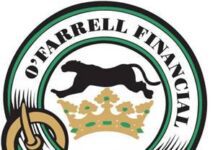by Sarah Chisholm
Financial Advisor, O’Farrell Wealth & Estate Planning | Assante Capital Management Ltd.
In April, we dove into Financial Jargon, the acronyms used to identify investment accounts such as RRSPs, RESPs, RRIFs, and TFSAs. Now, as promised, we will look at investment holdings jargon including stocks, bonds, ETFs, crypto etc. So please grab your favourite cup of tea or coffee and let us dive in.
Stocks and bonds are at the heart of most investments. Stocks represent a direct ownership in a corporation. This means you can participate in the corporate success by receiving dividend payouts and through having the value of the stock increase (capital gains). Conversely you can also participate in the failures or challenges and see the dividend payments paused and the value of the stock drop (capital losses). You may also hear stocks referred to as shares or as equities.
Equities are often discussed in terms of geography, sector, and capitalization. Large cap stocks refer to corporations whose market value is greater than $10 billion. In comparison, small cap stocks refer to corporations whose market value is less than $3 billion. Depending on the country of origin or the type of corporation, you can follow equities in the general sense by following different indexes such as the TSX in Canada or the S&P 500 in the United States.
Bonds are also connected to corporations or to governments. With bonds, you lend money to the corporation or government and in return you receive payments (coupons), typically,
on a semi-annual basis. Your coupons are based on a locked in or variable interest rate for a set term. At the end of the term, you receive your money(principal) back. With bonds you often hear the term “yield”. Yield helps represent the return on your investment based on the coupon you receive and the amount you paid for your bond. Yield is important because you can buy bonds at a discount or at a premium.
Rather than holding stocks or bonds directly, many people use mutual funds or exchange traded funds (ETFs). When they were first introduced, ETFs primarily tracked specific indexes. Now you can choose from a variety of mandates including passive, active, or leveraged. With an ETF, you can buy the fund any time during trading hours and instantly know your purchase price or sell price; whereas with a mutual fund a sell or buy order is processed at the end of the day based on the closing values.
Finally, we come to the digital world with crypto, bitcoin and NFTs. Cryptocurrency refers to a wide range of digital currency options available. Digital currencies can be used as a currency (to buy products or services), or to hold as an investment asset with the goal of the currency rising over the long run. Bitcoin is one of the many cryptocurrency options available. NFTs (Non-Fungible Tokens) is a record of ownership of a digital or physical asset. Each NFT is unique and is connected to a specific asset such as a digital artwork.
Financial jargon is truly endless, however, there are aways resources available to help you navigate any questions. Reach out to a trusted Financial Advisor, read the news, take a deep dive into the mutual fund or ETF fund facts. These are all great starting points to expand your financial knowledge and confidence.
We welcome questions so please reach out and follow us on Facebook @ OFarrellWealth.
Sarah Chisholm is a Financial Advisor with Assante Capital Management Ltd. The opinions expressed are those of the author and not necessarily those of Assante Capital Management Ltd. Please contact her at 613.258.1997 or visit ofarrellwealth.com to discuss your circumstances prior to acting on the information above. Assante Capital Management Ltd. is a member of the Canadian Investor Protection Fund and the Investment Industry Regulatory Organization of Canada.







